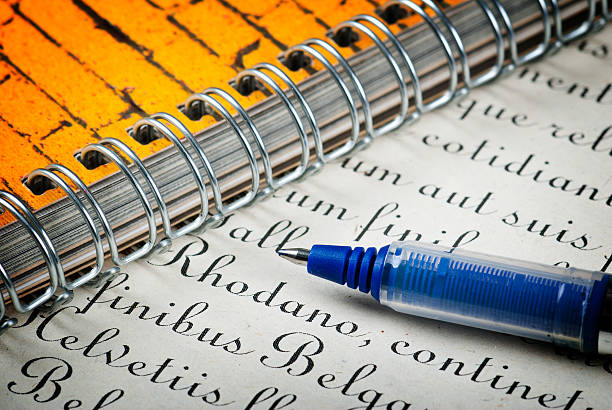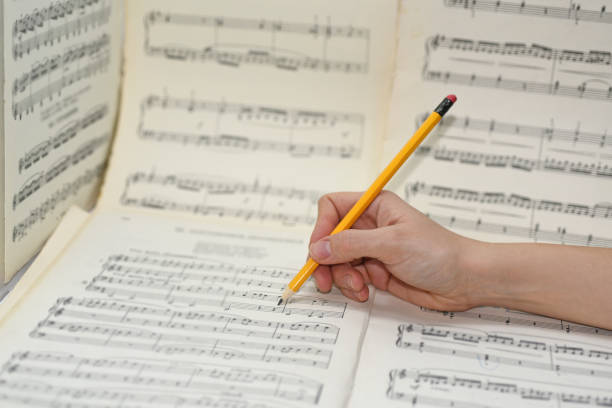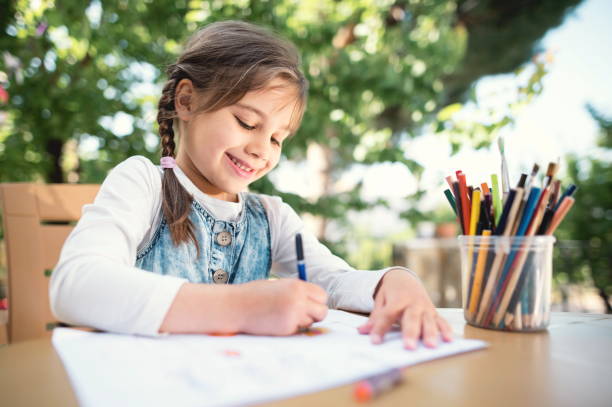How To Write Simultaneous Scenes (13 Best Ways)
In the world of storytelling, there exists a powerful technique that allows writers to breathe life into their narratives like never before.
It’s a narrative tightrope walk, a dynamic dance of words, and a captivating literary feat that can mesmerize readers and elevate a story to new heights.
We are talking about “Simultaneous Scenes,” a writing technique where multiple storylines, events, or character perspectives unfold concurrently within the same narrative space.
This guide is an exploration of the art and craft of writing simultaneous scenes, a technique that invites writers to transcend the constraints of linear storytelling, offering a multi-dimensional and immersive experience for both authors and readers alike. Whether you’re a seasoned writer
How To Write Simultaneous Scenes
Writing simultaneous scenes can add depth and complexity to your storytelling. Here’s a step-by-step process to help you achieve this effectively:
Identify the Purpose
Begin by understanding why you want to write simultaneous scenes. Are you trying to show parallel events, contrast different perspectives, or build tension? Define your purpose to guide your writing.
Outline Your Story
Have a clear outline of your story or plot, so you know where simultaneous scenes can enhance the narrative. Ensure you have well-developed characters, settings, and a solid plot structure.
Choose Key Moments
Select specific moments or events in your story where simultaneous scenes will have the most impact. These could be moments of conflict, revelation, or decision-making.
Create Separate Settings
Establish distinct settings for each scene to make it clear to the reader that they are happening simultaneously. Describe these settings with enough detail to immerse the reader in each location.
Develop Character Arcs
Ensure your characters in both scenes have their own arcs, goals, and motivations. This helps the reader engage with multiple perspectives and empathize with different characters.
Manage Timing
Pay attention to the timing of events in each scene. Make sure they progress at a similar pace to maintain the sense of simultaneity. You can use timestamps or references to maintain synchronization.
Transition Smoothly
Use transitional cues or techniques to smoothly switch between scenes. This might include chapter breaks, subheadings, or clear shifts in perspective.
Maintain Clarity
It’s crucial to avoid confusing your readers. Clearly indicate which scene you are in, and use clear language to describe the actions and emotions in each scene.
Create Parallels
Look for opportunities to draw parallels between the simultaneous scenes. This could be through similar dialogue, actions, or thematic elements that connect the two scenes.
Build Tension or Contrast
Leverage the simultaneous scenes to create tension or contrast between them. This can add depth to your storytelling and keep readers engaged.
Resolve or Converge
Decide whether you want the simultaneous scenes to eventually merge or resolve in some way. This can depend on your overall story structure and goals.
Edit and Revise
After you’ve written your simultaneous scenes, carefully edit and revise to ensure they flow seamlessly and serve your story’s purpose. Eliminate any unnecessary redundancy and make sure the scenes enhance the narrative.
Test with Beta Readers
Have beta readers review your writing to get feedback on how well the simultaneous scenes work. Their input can help you fine-tune your storytelling.
Remember that writing simultaneous scenes requires careful planning and execution, but when done effectively, it can add depth and engagement to your narrative.

Understanding Simultaneity
Understanding simultaneity in storytelling is akin to mastering the art of crafting a symphony of moments, where each note plays in perfect harmony, creating a breathtaking cacophony of emotions and revelations.
It’s the writer’s equivalent of juggling multiple lives, orchestrating a dance of destinies on the page. Simultaneous scenes are where the magic happens, where characters breathe, decisions collide, and time itself bows to the whims of your narrative.
It’s not just about telling a story—it’s about immersing your readers in a whirlwind of experiences, allowing them to witness the ebb and flow of life, love, and conflict as they unfold in parallel.
In the realm of writing, simultaneity is your secret doorway to a universe where past, present, and future converge in a breathtaking, mind-bending mosaic of words.
Explaining the concept of simultaneous scenes
Simultaneous scenes are the literary equivalent of a narrative tapestry, intricately woven to provide a multi-dimensional experience for the reader.
This technique involves depicting multiple events or storylines occurring simultaneously, often in different locations or perspectives, within the same narrative space. Rather than following a linear chronology, simultaneous scenes allow the writer to leap between moments, drawing connections, revealing contrasts, and creating a dynamic interplay that keeps readers on the edge of their seats.
It’s a masterful way of showing how various characters and plotlines are interwoven in the grand symphony of the story, offering a richer, more immersive reading experience that captivates and challenges our understanding of time and causality.
Character Development in Simultaneous Scenes
Character development in simultaneous scenes is akin to watching a thrilling high-wire act without a safety net, where every step a character takes, every word they utter, reveals the intricate layers of their persona.
It’s a riveting exploration of the human soul played out in real-time, as characters face choices, conflicts, and consequences simultaneously, painting a vivid mosaic of their growth, resilience, and transformation.
In this narrative crucible, readers witness the raw, unscripted evolution of personalities, where flaws may become strengths and virtues might turn into vulnerabilities, all while the clock keeps ticking.
Simultaneous scenes infuse character development with a dynamic vitality that leaves readers breathless, watching our heroes and anti-heroes teeter on the precipice of their destinies, their every heartbeat echoing through the pages.
Portraying multiple characters’ perspectives in real-time
Portraying multiple characters’ perspectives in real-time is like orchestrating a kaleidoscope of emotions, thoughts, and experiences within the pages of a story.
It’s akin to having a front-row seat to the minds and hearts of a diverse cast of characters, each with their own unique lens on the world. In real-time, readers traverse the intricate terrain of these characters’ lives, witnessing their hopes, fears, and desires as they unfold, moment by moment.
This narrative technique immerses readers deeply in the story, allowing them to understand the intricate web of human connection and conflict, appreciating the beauty of simultaneous stories intertwining and revealing the complex tapestry of the human experience.
The real-time portrayal of multiple perspectives not only offers a rich and multifaceted understanding of the characters but also invites readers to embrace empathy, empathy, and the profound nuances of human existence.
Plot Structure and Simultaneous Scenes
Plot structure and simultaneous scenes are like a thrilling dance of narrative threads, weaving an intricate tapestry of storytelling that defies traditional conventions.
It’s the literary equivalent of a time-traveling jigsaw puzzle, where the past, present, and future intermingle, creating a mesmerizing narrative mosaic.
Simultaneous scenes are the conductor’s baton, orchestrating a symphony of tension, suspense, and revelation, as multiple plotlines unfold in parallel.
This technique propels readers on a rollercoaster ride of discovery, with each scene contributing a vital piece to the larger puzzle, ensuring that no detail, no emotion, no revelation is lost.
The result is a plot structure that is as unpredictable as life itself, where past actions reverberate in the present, and the future is shaped by a kaleidoscope of choices.
In this realm, storytelling becomes an art form that defies linear constraints and invites readers to savor the delicious complexity of a narrative that is, quite literally, in multiple places at once.
Weaving multiple storylines together
Weaving multiple storylines together is akin to being a masterful seamstress of words, skillfully interlacing diverse narratives into a tapestry that captivates and astounds.
It’s a literary juggling act where each thread represents a unique story, character, or perspective, and the magic happens when they harmoniously converge to form a complex, interconnected whole.
This storytelling technique challenges writers to craft a symphony of plotlines, each contributing its own distinctive note to the overarching composition.
The beauty lies in the intricacy of their intersections, where one character’s choices may have profound consequences for another, and seemingly unrelated events eventually intertwine with breathtaking significance.
It’s a narrative tightrope walk, where the final mosaic of intertwined stories unveils the profound and often unexpected connections that lie beneath the surface of the human experience, leaving readers spellbound by the art of storytelling at its most ingenious.

Setting and World-Building
Setting and world-building in storytelling are the architects of dreams, the conjurers of realms where reality and imagination meld into a wondrous tapestry. It’s like creating a second skin for the narrative, one that breathes, pulsates, and lives.
In these painstakingly crafted landscapes, readers not only see the world but feel it, taste it, and breathe its unique air.
It’s where the ordinary transcends into the extraordinary, where the environment becomes a character in its own right, shaping the plot and influencing the characters’ choices.
World-building is a voyage into uncharted territory, and setting is the map that guides our journey, allowing readers to escape the confines of their reality and embark on an odyssey where the boundaries of the known world dissolve into a realm of limitless possibilities.
How to establish different settings and atmospheres in simultaneous scenes
Establishing different settings and atmospheres in simultaneous scenes is akin to orchestrating a grand theater production where each stage is a world unto itself.
It’s a delicate balance of descriptive artistry and strategic placement, allowing readers to seamlessly transition between multiple locations and atmospheres without losing their bearings.
The key is in the details: vivid, sensory-rich descriptions, distinct cultural or environmental elements, and the infusion of each scene with its unique emotional climate.
By carefully layering these elements, writers can transport readers from the bustling streets of a metropolis to the tranquility of a rural village, or from the suffocating tension of a courtroom to the serene isolation of a mountaintop retreat.
Simultaneous scenes become a dynamic mosaic of settings, each offering a distinct flavor of place and mood, enriching the narrative with a symphony of sensory experiences that captivate the reader’s imagination and ensure a seamless transition between different worlds within the same story.
Dialogue and Interaction
Dialogue and interaction are the storyteller’s alchemical potions, the elixir of character revelation, and the spark that ignites the narrative.
They are the whispered secrets, passionate arguments, and silent confessions that bring characters to life, forging a connection between readers and the souls on the page.
In the hands of a skilled writer, dialogue is more than just words; it’s a portal to the heart, where emotions and intentions are laid bare.
It’s a choreographed dance of voices, each step revealing desires, secrets, and the ever-changing dynamics between characters.
Dialogue, in its most potent form, transcends mere conversation; it becomes the lifeblood of storytelling, painting vivid portraits of personalities, driving the plot forward, and evoking powerful emotions in readers.
It’s a magic trick, a tightrope walk, and a symphony of voices that keeps readers hanging on every word, waiting to unlock the mysteries of the human heart.
Writing engaging and authentic dialogue in simultaneous scenes
Writing engaging and authentic dialogue in simultaneous scenes is akin to capturing the pulse of real-life conversations within the intricate web of your narrative.
It’s not just about words spoken; it’s about the unspoken, the subtext, and the art of communication between characters who exist in different spheres but influence each other’s destinies.
Authentic dialogue thrives on the rhythm of human interaction, with its hesitations, interruptions, and passionate outbursts.
It reveals the unique voices of characters and allows readers to eavesdrop on their inner thoughts and conflicts. In simultaneous scenes, dialogue is the bridge that connects these parallel worlds, forging links between characters in a way that feels spontaneous and relatable.
It’s the heartbeat of your storytelling, the lifeline that keeps readers engaged, and the golden thread that ties the tapestry of your narrative together, ensuring that even in the midst of multiple narratives, the voices of your characters ring true and resonate with authenticity.
Technical Considerations
Technical considerations in writing simultaneous scenes are akin to the invisible scaffolding holding up a magnificent structure.
They are the well-orchestrated mechanics that ensure the narrative flows seamlessly, that time and place remain synchronized, and that readers are never lost in the maze of interconnected stories.
It’s like being a time-travel architect, crafting the chronology of events with precision and care. These technical intricacies involve transitions as smooth as silk, maintaining temporal consistency that feels like a well-tuned symphony.
It’s the delicate art of choosing the right point of view, ensuring that readers can effortlessly hopscotch between scenes while maintaining a firm grasp on the thread of the story.
These technical considerations may be behind the scenes, but they are the unsung heroes that make simultaneous scenes dance to the writer’s command and sing harmoniously to the reader’s delight.
Transitioning between simultaneous scenes
Transitioning between simultaneous scenes is akin to choreographing a seamless dance between separate worlds, where the rhythm and pacing are the key to maintaining the reader’s engagement.
It’s the art of changing gears without jarring the narrative, allowing readers to glide effortlessly from one scene to the next while staying emotionally invested in each storyline.
Whether it’s a clever segue, a shared theme, or a lingering emotional thread, these transitions act as the glue that binds the separate scenes into a cohesive whole.
They are the whispers between worlds, the gentle hand that guides readers through the labyrinth of your narrative, ensuring that the symphony of simultaneous scenes plays on without missing a beat, leaving your audience entranced and eager for what comes next.
Writing Challenges and Tips
Navigating the intricate terrain of simultaneous scenes can feel like embarking on a literary tightrope walk, where each step is both thrilling and treacherous.
These scenes present a canvas teeming with possibilities and pitfalls, where maintaining clarity while juggling multiple threads is a demanding art.
It’s like trying to solve a Rubik’s Cube while riding a rollercoaster. But fear not, for within these challenges lie the seeds of triumph.
The writer who embarks on this journey must embrace the chaos, balance the timelines, and harmonize diverse perspectives into a coherent narrative symphony.
Tips for success include vigilant organization, meticulous planning, and an unwavering commitment to character consistency.
Writing simultaneous scenes is an act of literary daring, an invitation to explore the fringes of storytelling, where risks are rewarded with narrative riches, and the reader’s engagement is taken to soaring heights.

Addressing common pitfalls and challenges
Addressing the common pitfalls and challenges of writing simultaneous scenes is akin to mapping the minefield before crossing it.
These narrative marvels often come with the risk of confusion, where readers may lose their way in the tangle of intertwined stories, or characters’ voices may blur into a cacophony.
It’s a complex puzzle with the potential for loose ends and inconsistencies that can disrupt the storytelling flow. However, recognizing these challenges is the first step to mastering them.
Authors can mitigate these risks by maintaining impeccable organization, clarifying transitions, and ensuring that each character’s journey remains distinct and compelling.
By facing these pitfalls head-on, writers unlock the full potential of simultaneous scenes, transforming what could be a literary minefield into a breathtaking narrative playground, where readers are rewarded with a tale that’s both intricate and unforgettable.
Examples and Case Studies
Examples and case studies in the realm of simultaneous scenes are the treasure troves of inspiration, the grand showcase of storytelling prowess.
It’s like peeking behind the curtain of a magician’s act to witness the secrets of their craft. These literary gems offer a vivid kaleidoscope of narratives where the technique is honed to perfection, illuminating the many facets of its potential.
From classics to contemporary works, these examples are the living proof that simultaneous scenes can wield the power to captivate, intrigue, and awe.
They beckon readers to immerse themselves in the creative prowess of master storytellers, inviting them to learn from the greats and, in turn, shape their own tales that will mesmerize and astonish with the enchanting dance of simultaneous scenes.
Analyzing famous literary works or films that utilize simultaneous scenes
Analyzing famous literary works or films that employ simultaneous scenes is like embarking on a thrilling expedition through the narrative wilderness.
It’s the opportunity to dissect and unravel the intricate storytelling techniques of master craftsmen, witnessing the magic behind the curtain.
In these revered classics and cinematic gems, simultaneous scenes serve as the canvas where the art of storytelling reaches its zenith.
They invite us to dissect the layers of symbolism, foreshadowing, and character development woven into these tales.
It’s a glimpse into the creative minds of literary and cinematic visionaries, where their ingenious use of this technique unveils profound themes and narrative structures that continue to inspire and awe.
Through these analyses, readers and viewers become explorers of the storytelling cosmos, discovering the secrets of these masters and gathering the tools to embark on their own creative odysseys through the enthralling terrain of simultaneous scenes.
Exercises and Practice
Exercises and practice in the realm of simultaneous scenes are the writer’s dojo, the training ground for narrative ninjas.
It’s where words become the martial arts of storytelling, and writers learn to gracefully navigate the challenging terrain of multiple perspectives and timelines.
These exercises are like mental acrobatics, demanding the nimblest of literary footwork as writers experiment with juggling plotlines, character voices, and the intricate interplay of scenes.
With each exercise, writers expand their narrative toolkit, gaining confidence and finesse in the art of simultaneous storytelling.
It’s the writer’s gym, where sweat and inspiration collide, forging a mastery of the craft that promises the ability to weave mesmerizing tales that captivate and astonish, leaving readers spellbound by the author’s prowess.
Writing prompts to practice writing simultaneous scenes
Writing prompts tailored for practicing simultaneous scenes are like portals to multiple dimensions, offering authors the chance to explore diverse storylines and characters in compact, thought-provoking bursts.
These prompts challenge writers to craft riveting narratives where time, place, and character perspectives intertwine in captivating ways.
It’s like having a box of literary puzzles, each prompt inviting the writer to solve the riddle of simultaneous storytelling.
These exercises inspire creativity, sharpen narrative agility, and provide the opportunity to hone the skills needed to master this intricate art.
With each prompt, writers delve into the exhilarating world of simultaneous scenes, testing their storytelling mettle and uncovering the magic of intertwining tales that will keep readers eagerly turning pages.
Frequently Asked Questions about How To Write Simultaneous Scenes
What are simultaneous scenes in storytelling?
Simultaneous scenes are narrative devices where multiple events or actions occur at the same time in different locations or from different character perspectives. They are used to provide a multi-dimensional view of a story.
Why should I consider writing simultaneous scenes in my story?
Simultaneous scenes can add complexity, depth, and tension to your storytelling. They allow you to show parallel events, contrast different viewpoints, and engage the reader by presenting multiple perspectives at once.
When is the best time to use simultaneous scenes in a story?
Simultaneous scenes work well when you want to emphasize key moments, conflicts, or decision points in your narrative. They should be strategically placed to enhance the overall storytelling.
How can I ensure clarity when writing simultaneous scenes?
To maintain clarity, provide clear transitions between scenes, use descriptive settings for each location, and make sure your characters have distinct voices, motivations, and arcs. Avoid confusing the reader with overly complex or disorganized writing.
What techniques can I use to transition between simultaneous scenes?
Transition techniques can include subheadings, chapter breaks, timestamps, or clear shifts in perspective. Choose the method that best suits your narrative style and helps the reader distinguish between scenes.
Should I focus on one scene before moving to the other, or switch back and forth frequently?
The choice depends on your narrative goals. You can either focus on one scene for a while before switching or switch back and forth frequently to create tension or contrast. Experiment with both approaches to see what works best for your story.
How do I make sure simultaneous scenes remain engaging and relevant to the overall plot?
Ensure that each scene contributes to character development, plot progression, or theme exploration. Keep them interconnected and relevant to the overarching story to maintain reader engagement.
Can simultaneous scenes be used in all types of storytelling, such as novels, short stories, and screenplays?
Yes, simultaneous scenes can be employed in various forms of storytelling, but their execution may vary. Novels and screenplays often have more space for exploration, while short stories may require a more concise approach.
Are there any common mistakes to avoid when writing simultaneous scenes?
Common mistakes include losing clarity, overcomplicating the narrative, and not maintaining consistency between scenes. It’s essential to plan and edit carefully to prevent these pitfalls.
Do you have any tips for practicing and improving the art of writing simultaneous scenes?
Practice by studying examples in literature and film, experiment with different techniques, and seek feedback from beta readers to refine your skills. Continuous improvement and experimentation are key to mastering this narrative technique.
Conclusion
In conclusion, writing simultaneous scenes is a dynamic and powerful narrative technique that can elevate the depth and complexity of your storytelling.
When used effectively, it adds a layer of engagement, allowing readers to experience multiple events, viewpoints, and emotions simultaneously.
By following a structured process that involves purposeful selection, careful planning, and skillful execution, you can master the art of crafting simultaneous scenes.
It’s important to maintain clarity, engage your readers, and ensure that each scene contributes meaningfully to your overall plot.
With practice, experimentation, and attention to detail, you can harness the potential of simultaneous scenes to create compelling and multi-dimensional narratives that captivate and immerse your audience.






